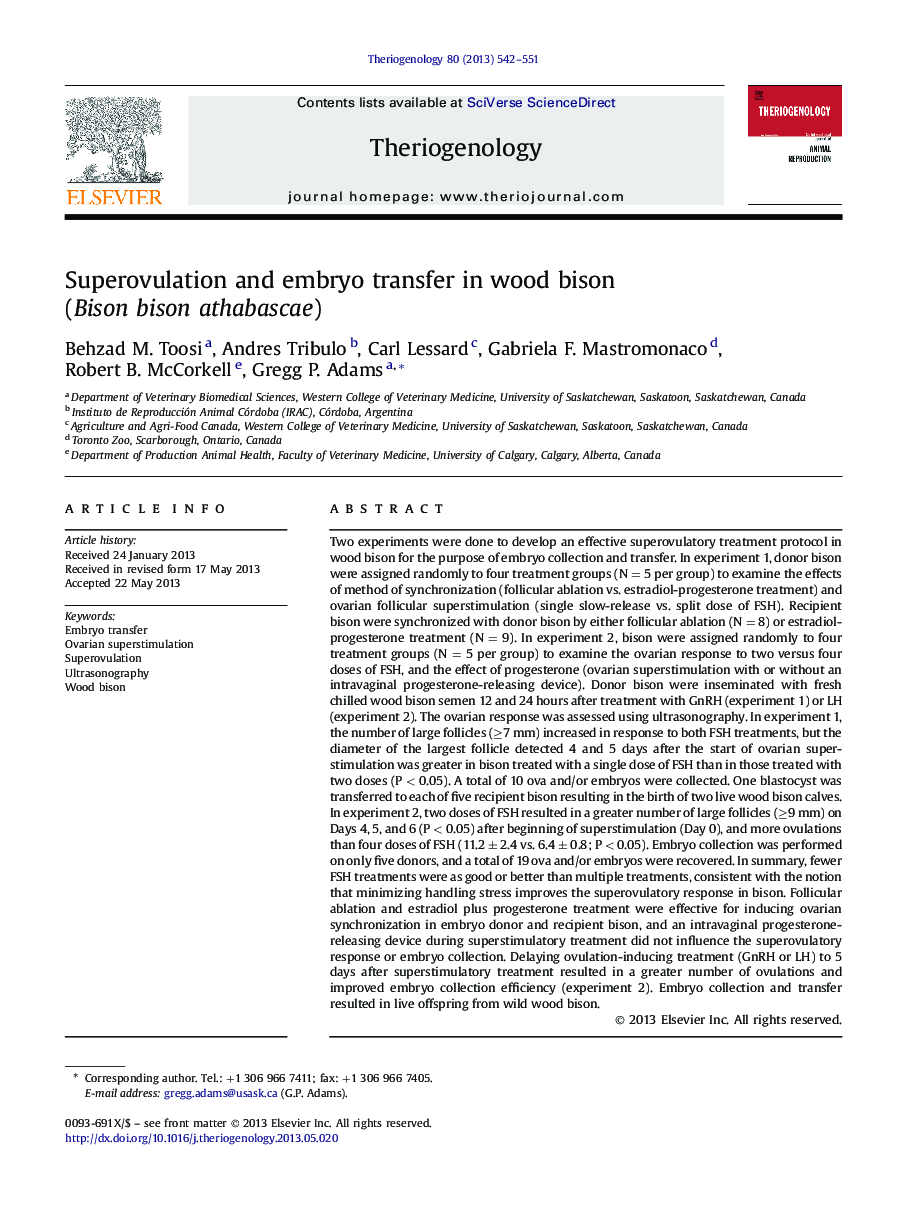| Article ID | Journal | Published Year | Pages | File Type |
|---|---|---|---|---|
| 2095320 | Theriogenology | 2013 | 10 Pages |
Two experiments were done to develop an effective superovulatory treatment protocol in wood bison for the purpose of embryo collection and transfer. In experiment 1, donor bison were assigned randomly to four treatment groups (N = 5 per group) to examine the effects of method of synchronization (follicular ablation vs. estradiol-progesterone treatment) and ovarian follicular superstimulation (single slow-release vs. split dose of FSH). Recipient bison were synchronized with donor bison by either follicular ablation (N = 8) or estradiol-progesterone treatment (N = 9). In experiment 2, bison were assigned randomly to four treatment groups (N = 5 per group) to examine the ovarian response to two versus four doses of FSH, and the effect of progesterone (ovarian superstimulation with or without an intravaginal progesterone-releasing device). Donor bison were inseminated with fresh chilled wood bison semen 12 and 24 hours after treatment with GnRH (experiment 1) or LH (experiment 2). The ovarian response was assessed using ultrasonography. In experiment 1, the number of large follicles (≥7 mm) increased in response to both FSH treatments, but the diameter of the largest follicle detected 4 and 5 days after the start of ovarian superstimulation was greater in bison treated with a single dose of FSH than in those treated with two doses (P < 0.05). A total of 10 ova and/or embryos were collected. One blastocyst was transferred to each of five recipient bison resulting in the birth of two live wood bison calves. In experiment 2, two doses of FSH resulted in a greater number of large follicles (≥9 mm) on Days 4, 5, and 6 (P < 0.05) after beginning of superstimulation (Day 0), and more ovulations than four doses of FSH (11.2 ± 2.4 vs. 6.4 ± 0.8; P < 0.05). Embryo collection was performed on only five donors, and a total of 19 ova and/or embryos were recovered. In summary, fewer FSH treatments were as good or better than multiple treatments, consistent with the notion that minimizing handling stress improves the superovulatory response in bison. Follicular ablation and estradiol plus progesterone treatment were effective for inducing ovarian synchronization in embryo donor and recipient bison, and an intravaginal progesterone-releasing device during superstimulatory treatment did not influence the superovulatory response or embryo collection. Delaying ovulation-inducing treatment (GnRH or LH) to 5 days after superstimulatory treatment resulted in a greater number of ovulations and improved embryo collection efficiency (experiment 2). Embryo collection and transfer resulted in live offspring from wild wood bison.
